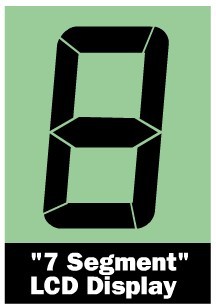Note that our simple LCD required an external light source. Liquid crystal materials emit no light of their own. Small and inexpensive LCDs are oftenreflective, which means to display anything they must reflect light from external light sources. Look at an LCD watch: The numbers appear where small electrodes charge the liquid crystals and make the layers untwist so that light is not transmitting through the polarized film.

Most computer displays are lit with built-in fluorescent tubes above, beside and sometimes behind the LCD. A white diffusion panel behind the LCD redirects and scatters the light evenly to ensure a uniform display. On its way through filters, liquid crystal layers and electrode layers, a lot of this light is lost -- often more than half!
In our example, we had a common electrode plane and a single electrode bar that controlled which liquid crystals responded to an electric charge. If you take the layer that contains the single electrode and add a few more, you can begin to build more sophisticated displays.
Common-plane-based LCDs are good for simple displays that need to show the same information over and over again. Watches and microwave timers fall into this category. Although the hexagonal bar shape illustrated previously is the most common form of electrode arrangement in such devices, almost any shape is possible. Just take a look at some inexpensive handheld games: Playing cards, aliens, fish and slot machines are just some of the electrode shapes you'll see.

